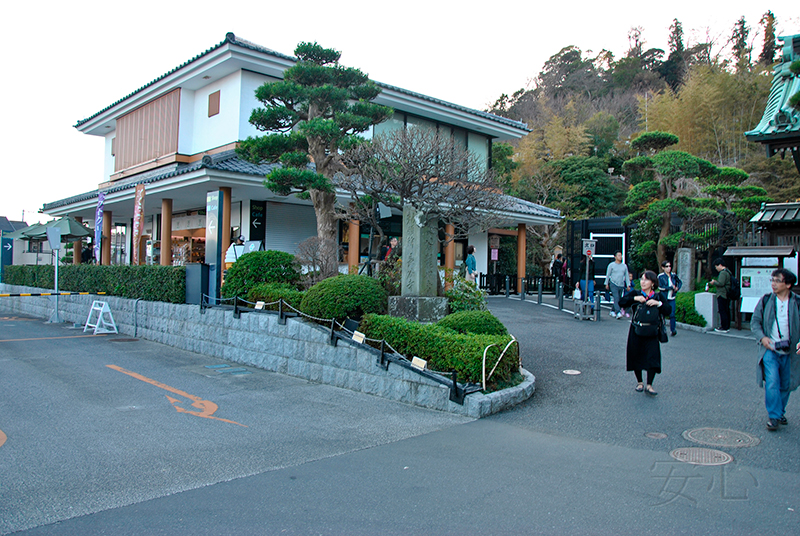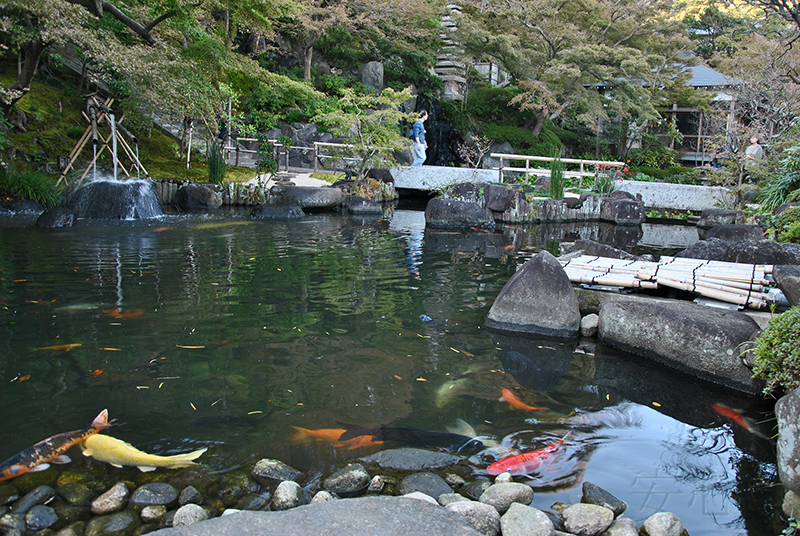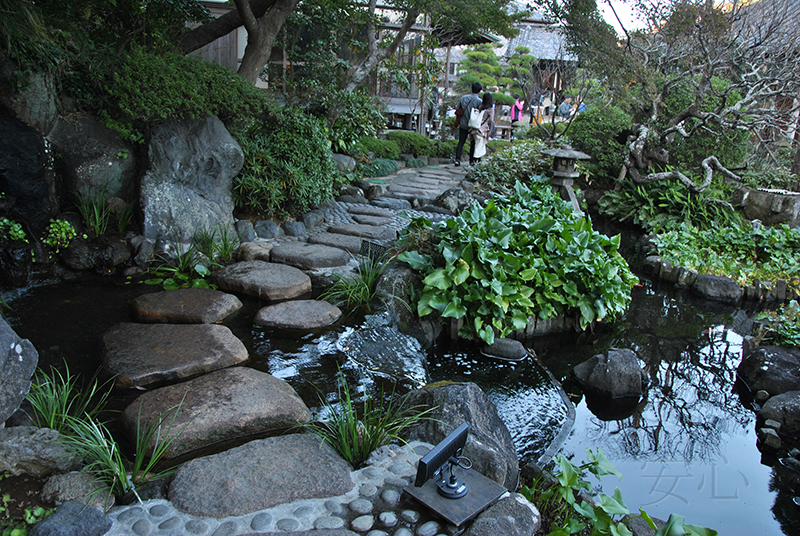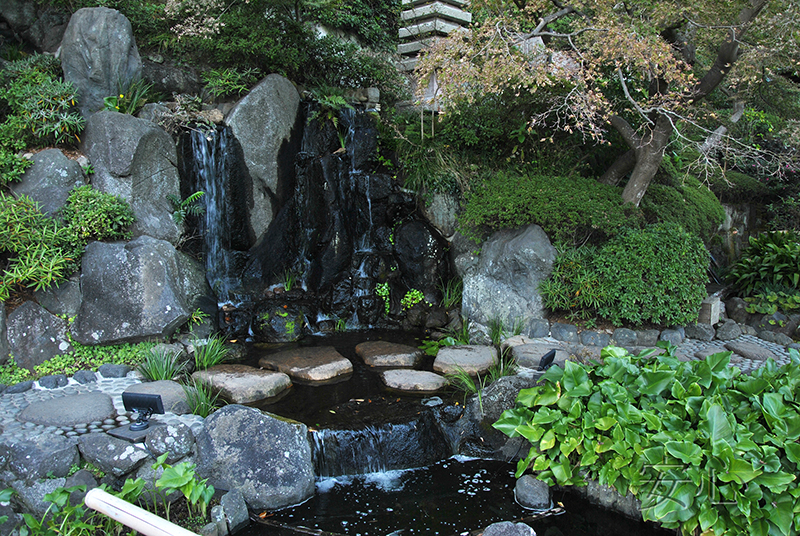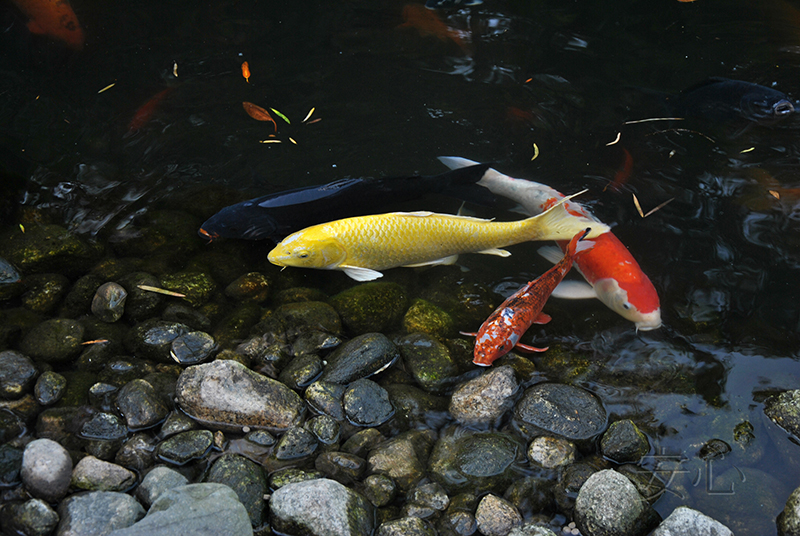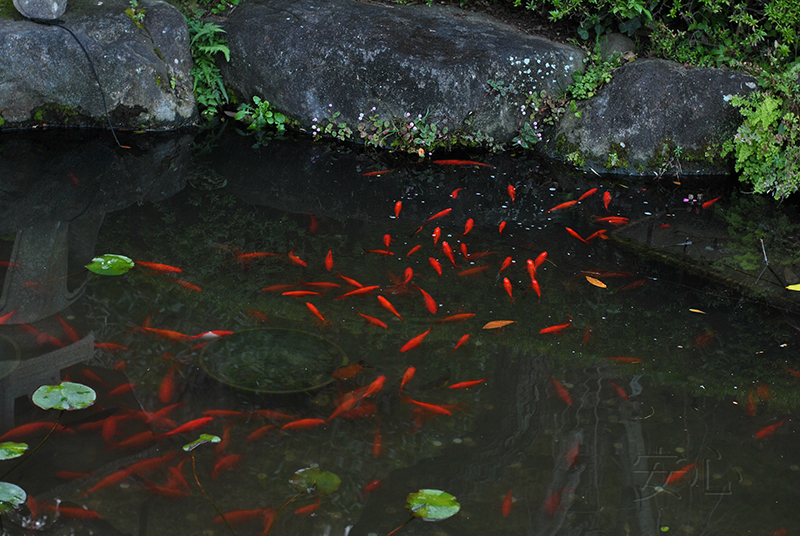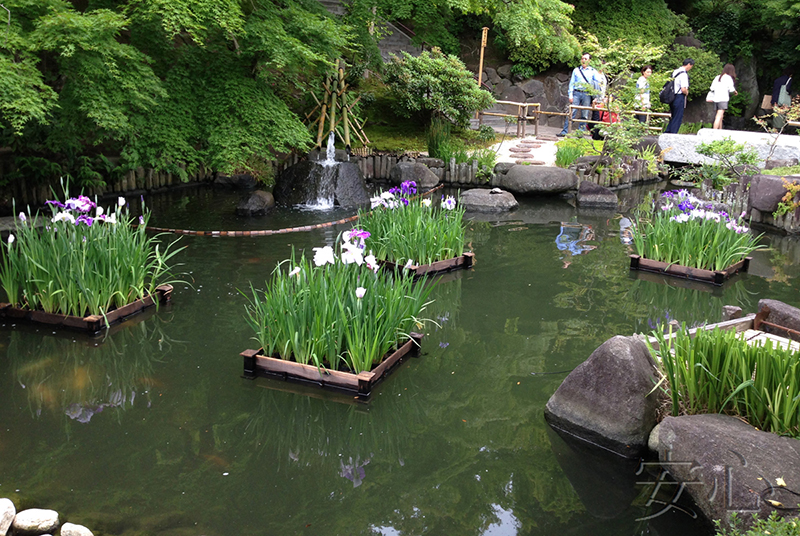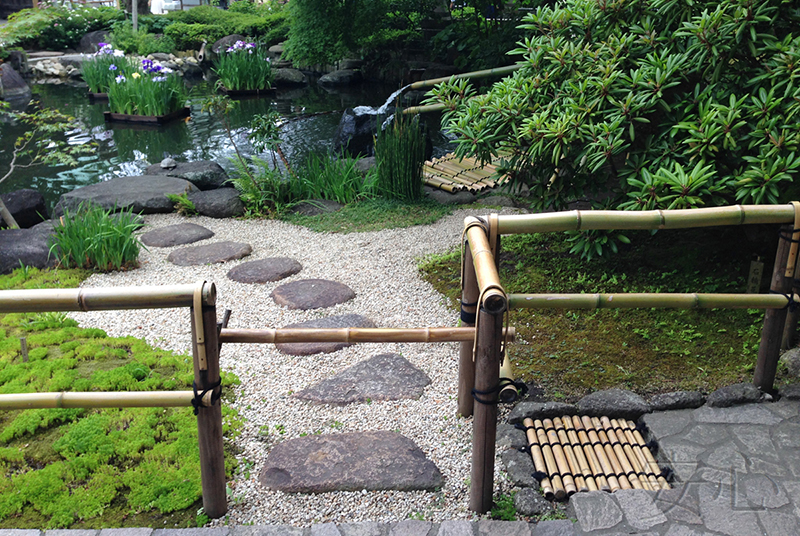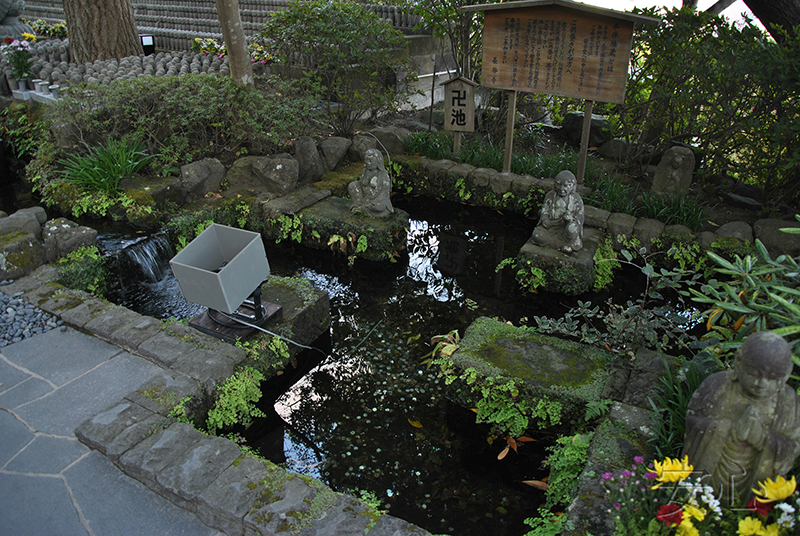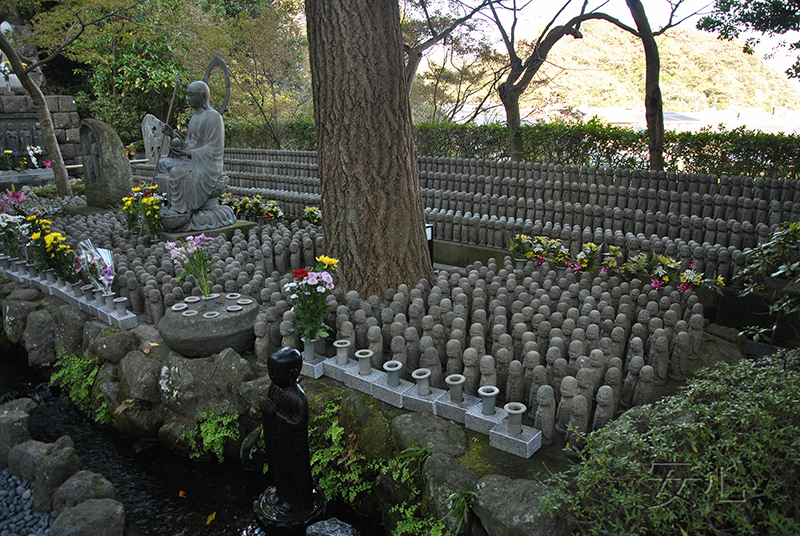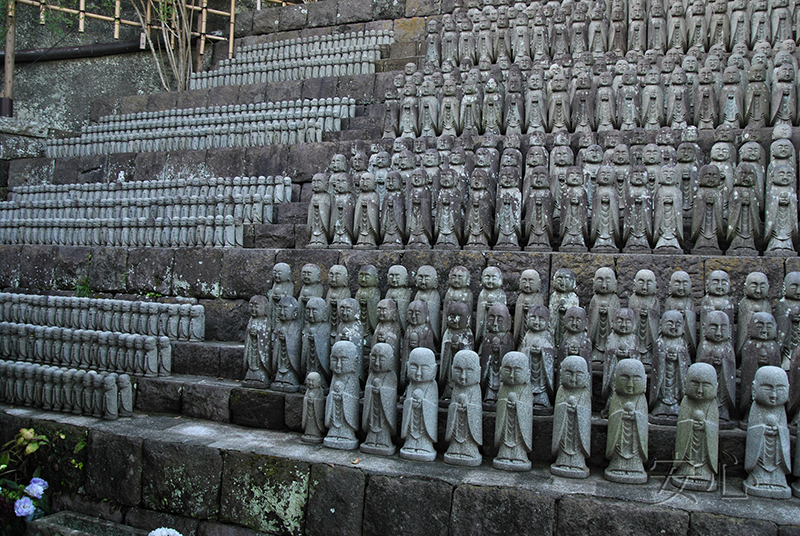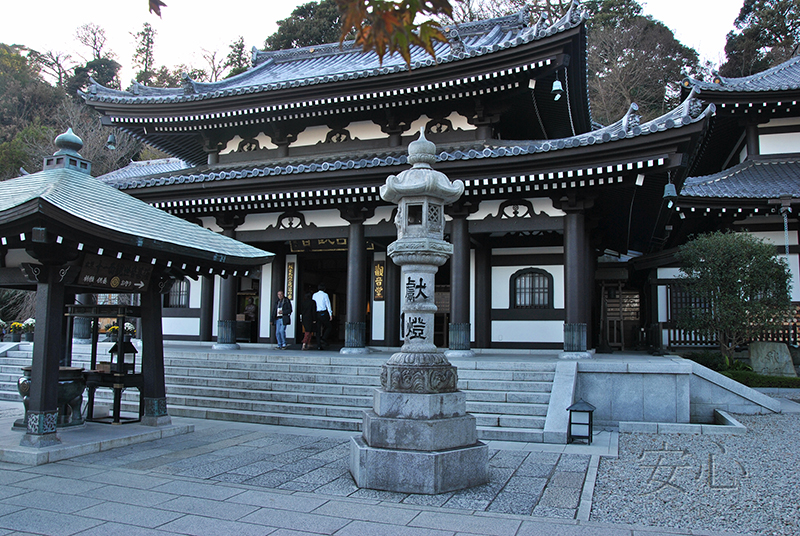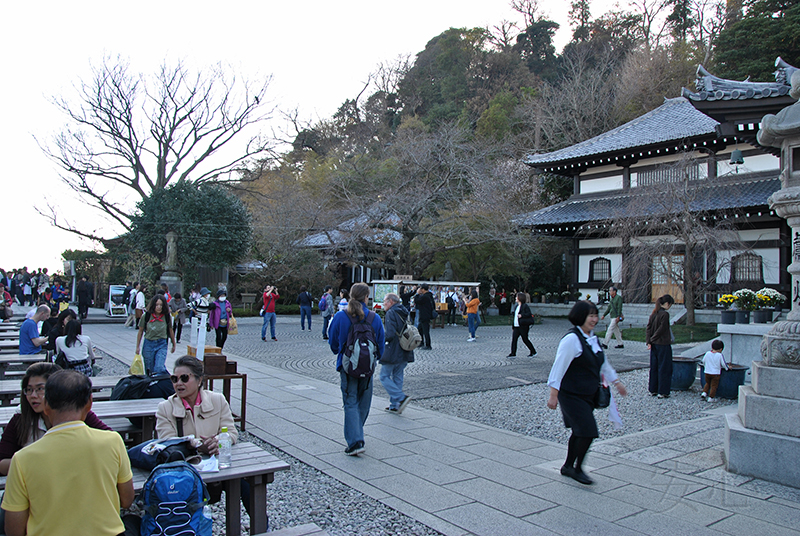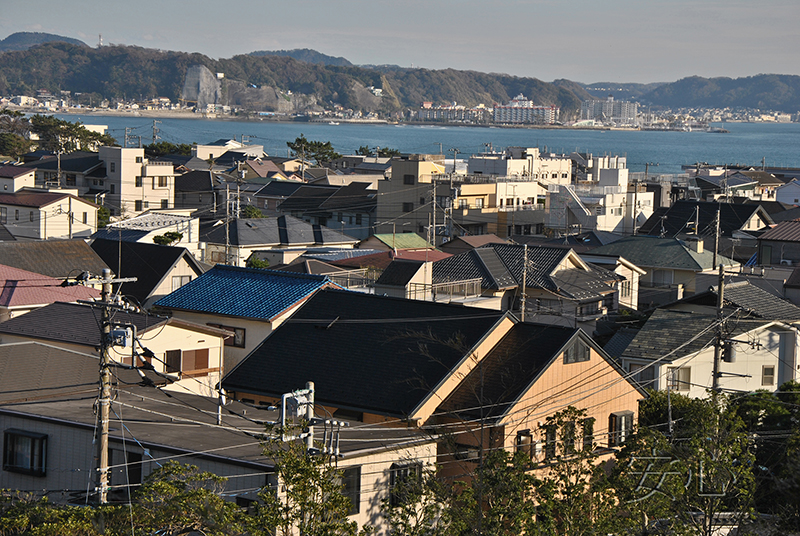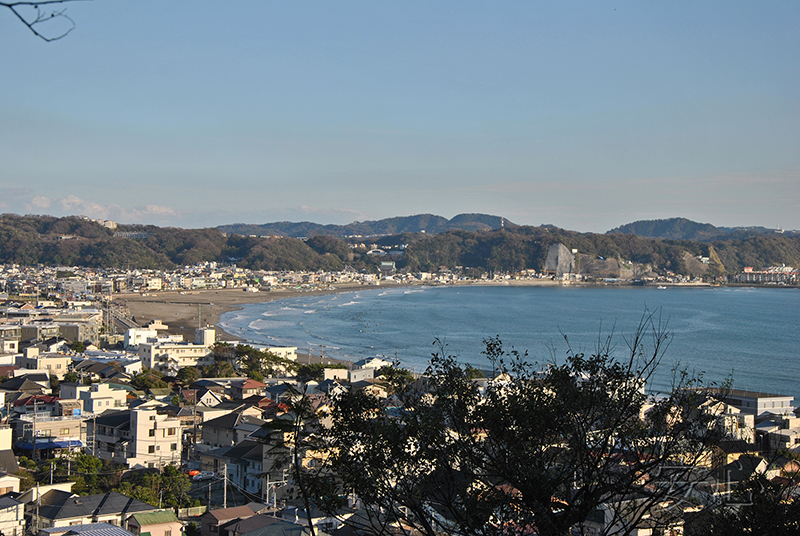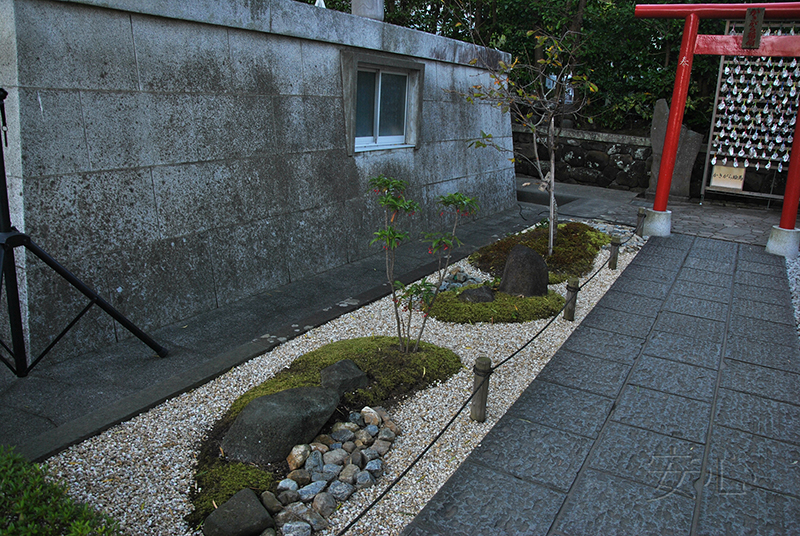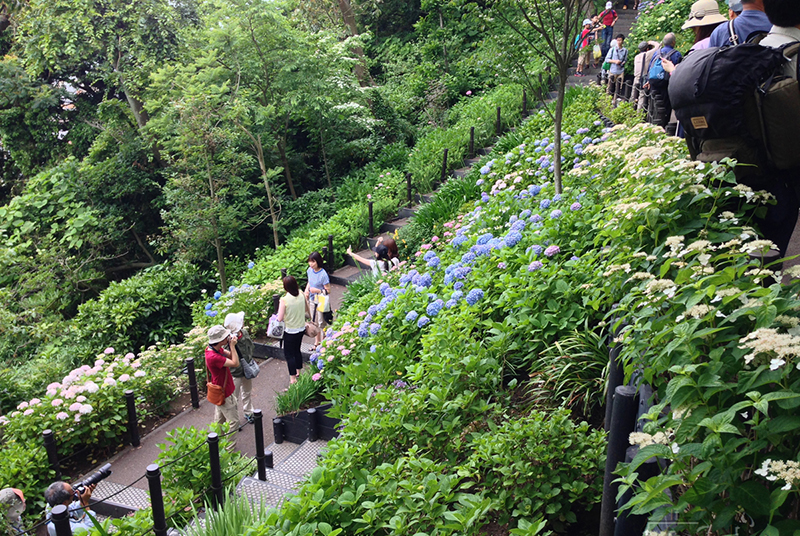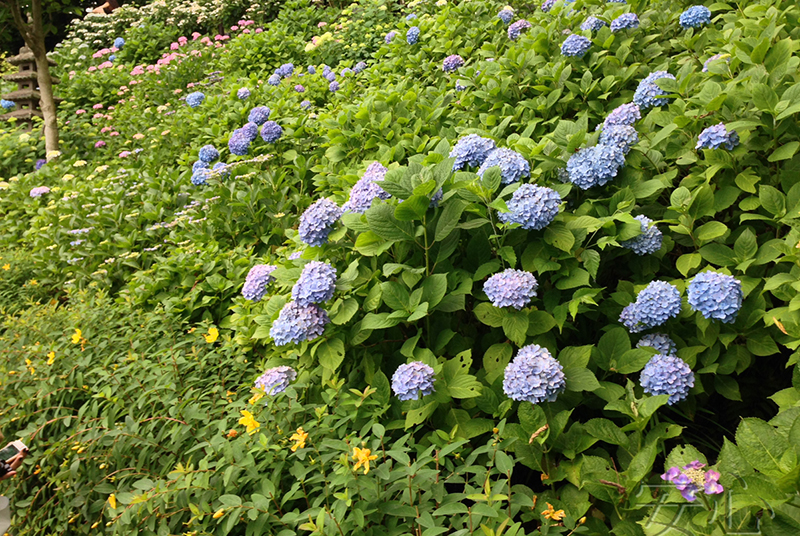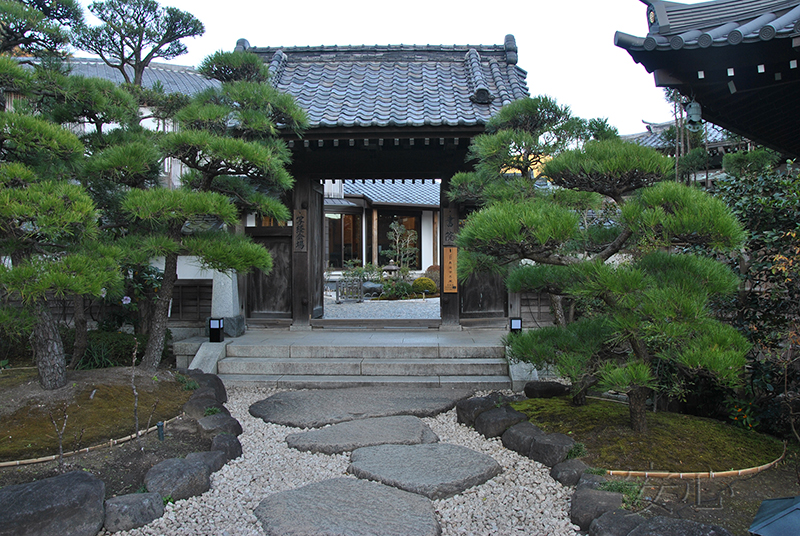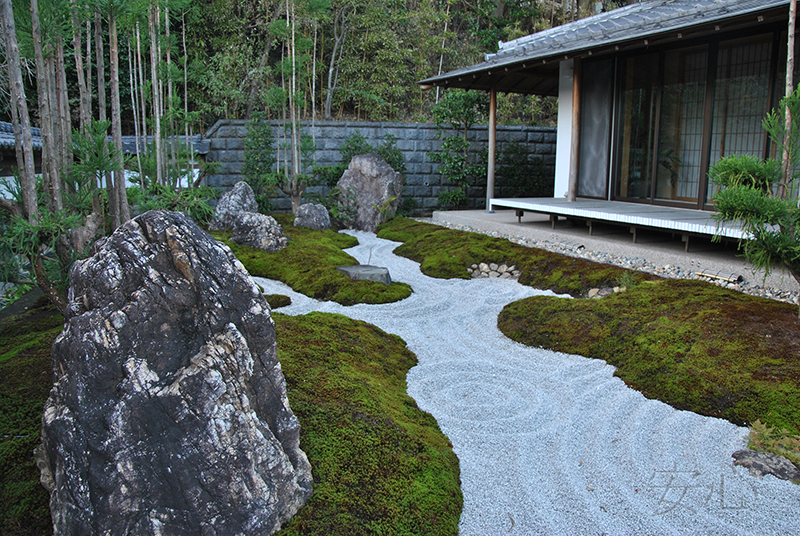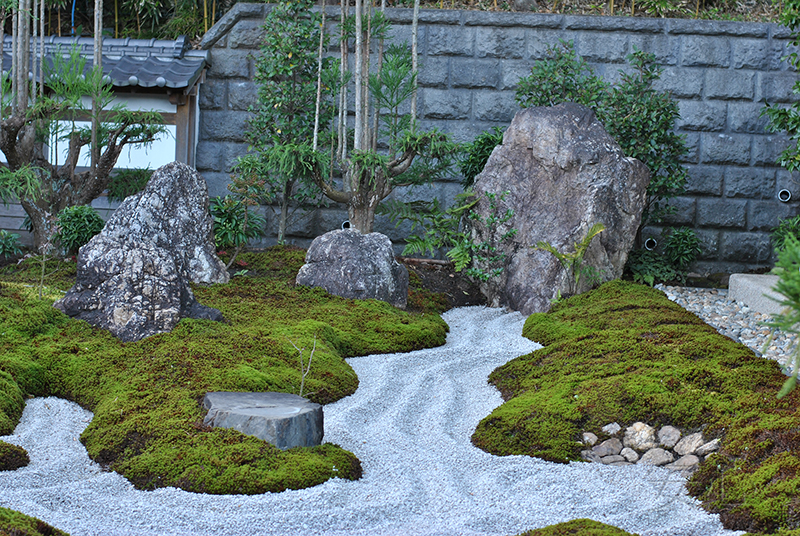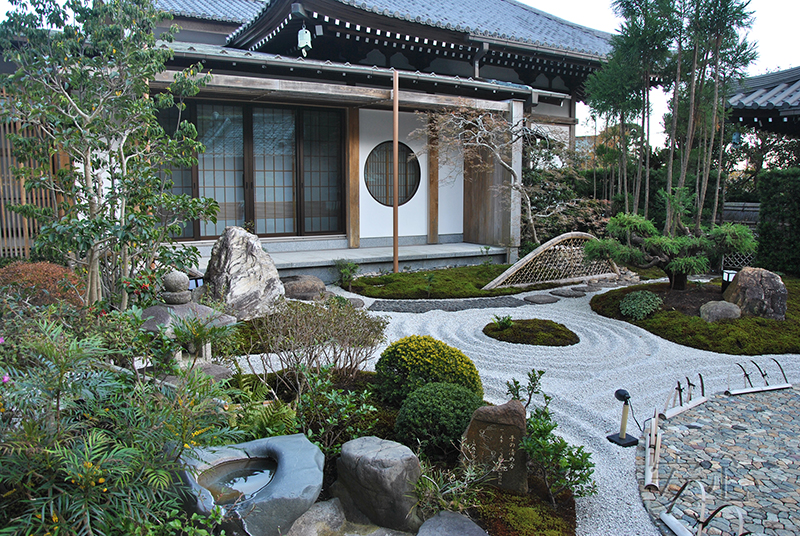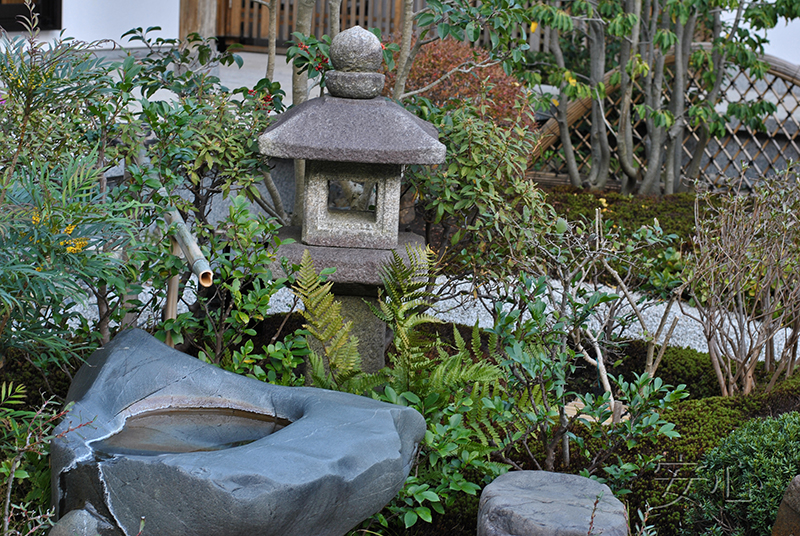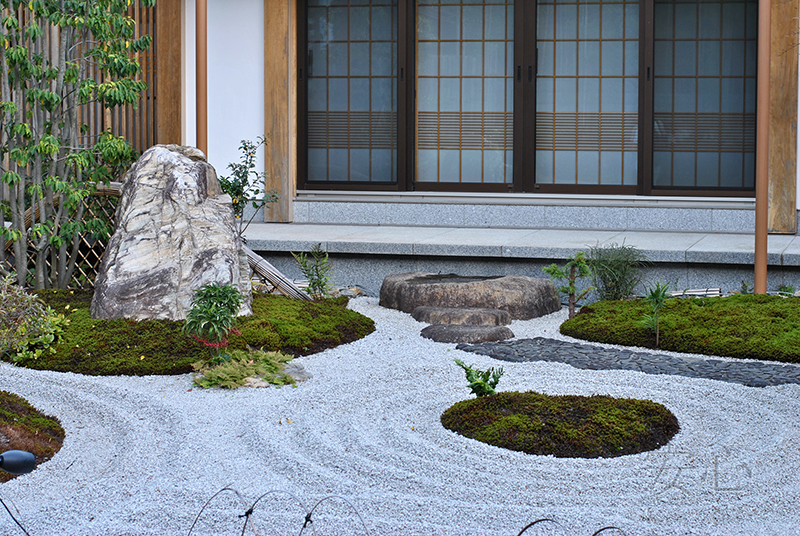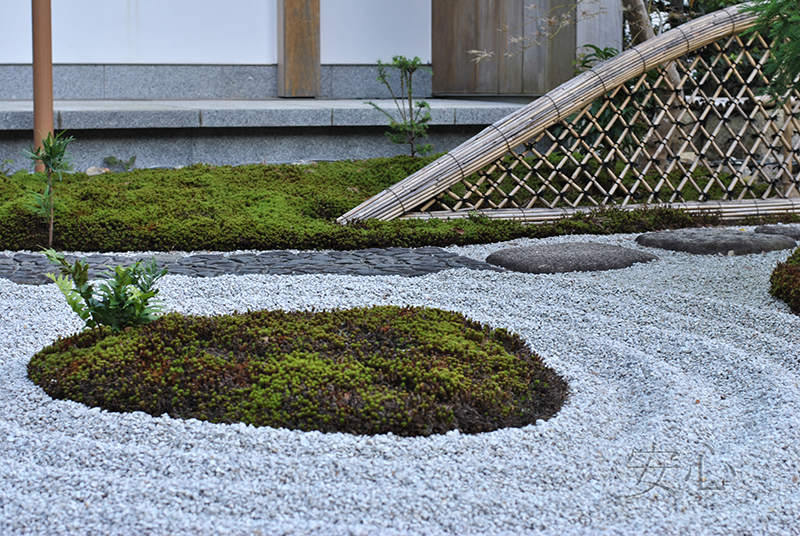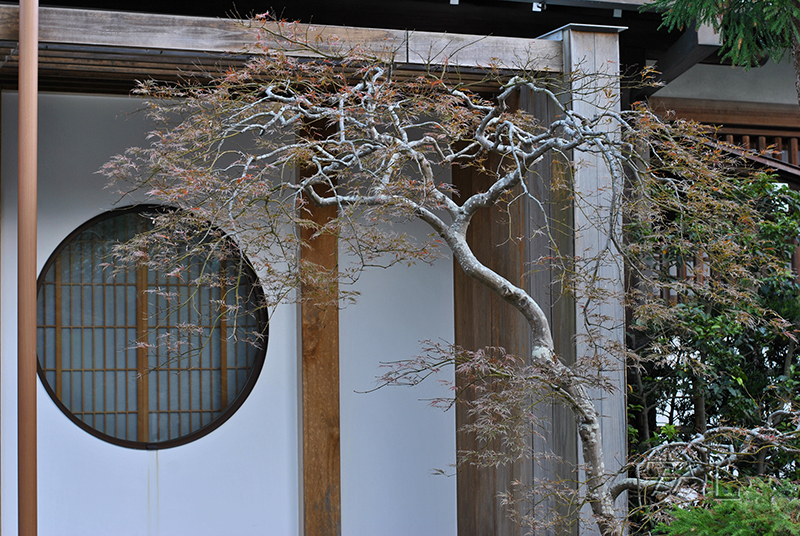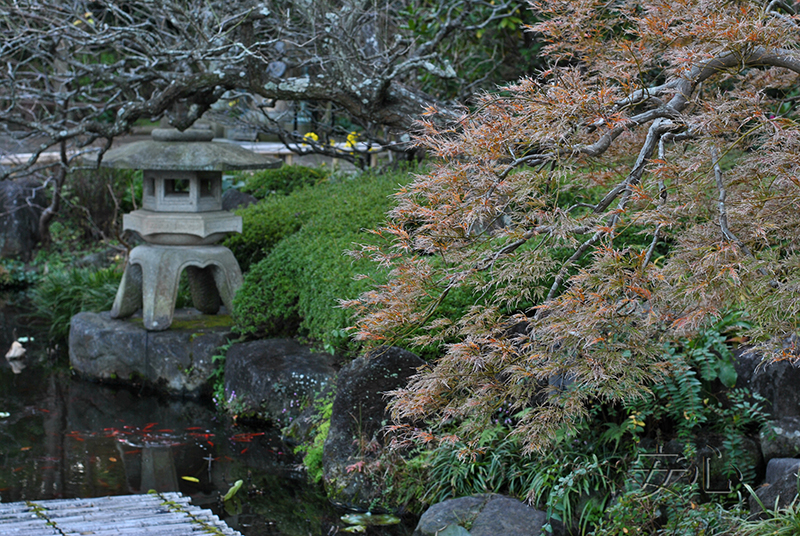
The garden of Hasedera Temple
According to the legend,in 721 AD AD the pious monk Tokudo Shonin found a large camphor tree in the mountain forests in the vicinity of Nara. The trunk was so large that it would be enough for two statues of the goddess of mercy Kannon. The first one he made from the from the lower part of the tree and then he requested to put it in the Hasedera temple near Nara. The second one was carved from the upper part of the trunk and then it was thrown into the sea, not far from the present-day Osaka. The action was accompanied by a prayer for the salvation of the people.
Fifteen years later, the statue was washed ashore not far from Kamakura, and, as they say, it was sending out rays of light. The statue of the goddess was brought to Kamakura a temple was constructed to honor it.
Hasedera Temple belongs to the Jodo sect, that is most famous for its statue of the goddess of mercy and of love Kannon. She has eleven heads, each head has its own expression. The height of the gilded statue is 9.18 meters, it is one of the largest wooden sculpture in Japan.
The main gate is decorated with a perfectly formed pine.
However, the entrance to the territory is a little to the left, immediately after the ticket office.
We were most interested in a rather large garden, laid out at the foot of the mountain. The compositional center of the garden is a large pond with shallow waters, streams and a natural waterfall. Large stone bridge divides the pond into two parts.
On the one of the banks you can see a water device of impressive size. It consisting of three bamboo chutes poured the water on the large black stone and then this water disappears in the pond.
In a large pond there is a turtle island.
A stepping stone path goes through the small one, so that you can come almost close to the waterfall.
Of course, in both ponds you can see bright koi carps. Moreover, there are both large fish and small ones that look like red lights.
And if you come here in the summer, you will see several pallets with blooming irises floating in the water like little islands.
Hasedera is built on the slope of a forest hill. To reach it, you have to climb the stairs. But there are a lot of interesting things along the way. On the first level there is the Jizo-do Hall with hundreds of small statues of the Jizo Bodhisattva who helps the souls of dead children to reach the paradise.
Then we went up the stairs and saw a large open area. In the middle there were the temple of the goddess of mercy Kannon.
Many tourists sat on benches, relaxed and talked. Some people bought special papers, wrote wishes and hung them on a special stand. But most of visitors went straight to the observation deck, from where the city and the sea were visible.
To the right of the Kyozo (repository for storing Buddhist sutras) we found a small garden. A low hill covered with moss was divided into two by a winding stream.
To make the moss look great, moisture is sprayed here.
There is still a lot of interesting things. For example, Shoro Belfry. It is struck at 8 O’clock every morning when the entrance gate opens.
Mini-gardens attracted our attention. In front of the bell there are bushes and a formed pine, and on the right there is a small dry garden.
There is a cemetery here, but you cannot go further.
Then we started to go down. In the fall, the view of the stairs was quite usual.
But in the summer, the picture changes dramatically due to flowering hydrangeas. By the way, this path is called "hydrangea's path".
But most of all we were interested in a dry garden, which at first we could not find. It is located on the first level, to the right of the ponds. Huge stepping stones lead to the gates.
The garden is very beautiful! You can see it only from the centrer. Left part made in the form of a dry stream flowing between artificial hills covered with moss. Several large rocks and a few cedars formed in daysugi style placed on the hills.
The right side is made in the form of small islands. On the first there is a tsukubai and lantern, on the other island there os a large beautiful stone, on the third there is cryptomeria. The fourth island is adjacent to the building, the stone path goes next to it. There is also sode-gaki (a bamboo screen in the shape of a kimono sleeve). And the fifth, the smallest island, is in the center, and only a small fern grows on it.
But the formed Japanese maple looks especially touching, gracefully covering the round window.
It is very beautiful garden, and I didn't want to leave there!
But, unfortunately, it began to get dark, and it was necessary to leave this wonderful place. I strongly advise you to visit this garden, if you will have the chance!
anshin©2011All rights reserved. When using the materials of the site, reference is obligatory.
Proposals for co-operation, as well as comments and suggestions on the site please send to the address: anshinsad@gmail.comtel: +7 (965) 121-80-60, 10am-20pm

